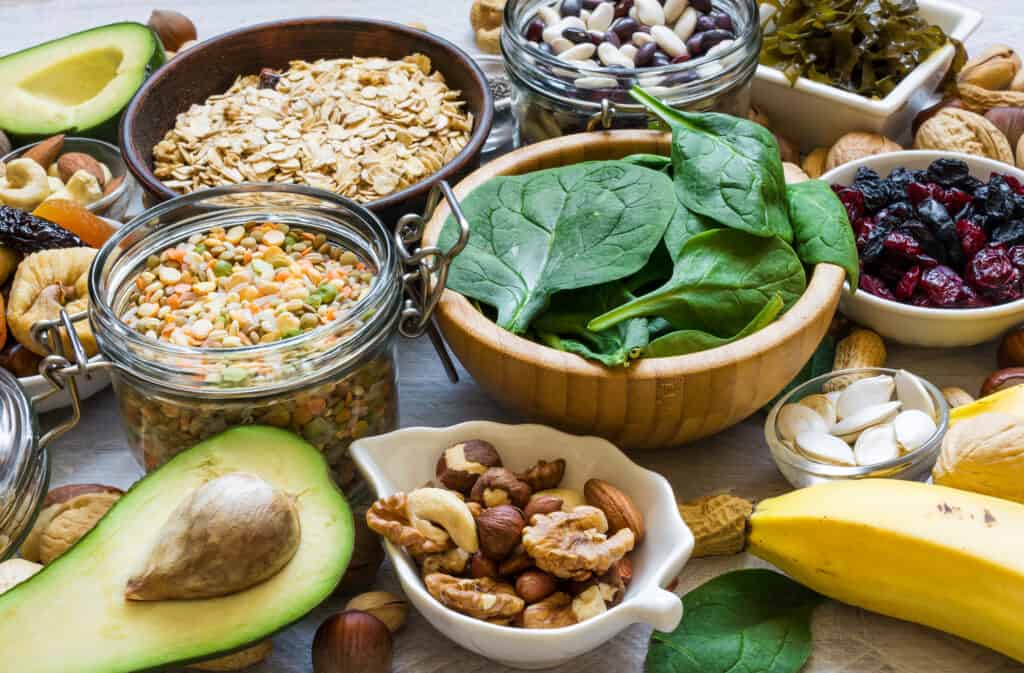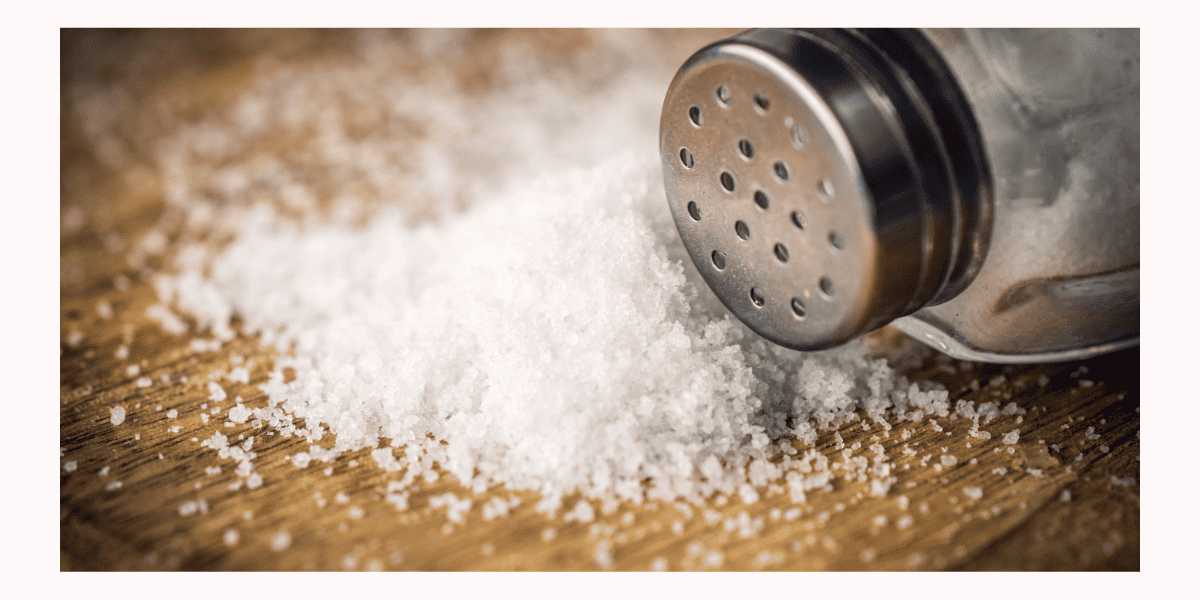EDITOR’S SUMMARY: Do you need to break-up with salt, or can this tongue-tantalizing substance be a “friend with benefits?” Does “everything in moderation” include these white granules, with its red flag warnings about hypertension and heart attacks? It turns out quantity matters, and of equal importance are type and quality. Perhaps with a few simple tweaks, your long-term love affair can continue.
By Carter Trent
Salt has received a bad rap for contributing to health issues such as high blood pressure, heart disease, and stroke. But salt isn’t the villain in this story.
After all, salt contains an element essential to the human body called sodium. While sodium and salt are often used interchangeably, sodium is actually an ingredient in salt, which is a combination of sodium and chloride.
Salt’s health concerns arise from its exorbitant use, particularly among packaged food manufacturers and restaurants. Both use excessive amounts of sodium to make their food taste appealing to consumers, as well as for baking, curing meat, and in the case of packaged food, as a preservative. Consequently, Americans consume over 70% of their sodium from processed foods and restaurant fare.
Quantity of Salt Intake
Nine out of ten Americans consume more sodium than they need, according to the U.S. Department of Health and Human Services (HHS). Americans consume an average of 3,400 milligrams of sodium daily.
The U.S. Food and Drug Administration (FDA) recommends limiting sodium to under 2,300 milligrams per day for adults, and even less for children under 14 years of age, depending on their age group.
For 2 to 4 year-olds, the FDA’s recommended sodium limit is 1,200 milligrams per day. For 5 to 8 year-olds, the recommended limit is 1,500 milligrams. And for 9 to 13 year-olds, the limit is 1,800 milligrams.
On average, children consume nearly double the FDA’s recommended daily sodium limits. It’s easy to do, as the recommended sodium level is equivalent to a single teaspoon, and one meal at a restaurant can easily exceed that level.
A Bit of Physiology
So.. how do you get the sodium needed for your body’s ultimate functioning, while ensuring you and your family don’t overdo it and run the risk of developing health issues? To tackle that question, it’s important to understand the role of sodium in the body, and why too much is considered unhealthy.
Sodium is an electrolyte, and the body uses electrolytes for many essential functions, such as transmitting nerve impulses and contracting muscles.
When a nerve cell needs to send a signal to the brain, it lets sodium in, which tells the nerve cell to fire the signal. The nerve cell then flushes out the sodium with potassium, and the cycle repeats for the next signal.
Sodium is especially essential for maintaining the proper balance of water in and around your cells. That’s why you don’t want to avoid sodium altogether.
If your body gets too little sodium, your cells start to swell due to excess water. This situation, called hyponatremia, occurs primarily to older adults, especially those taking medications that can deplete the body’s sodium.
If this happens, your muscles may cramp, you’ll suffer headaches, and may even become unable to think clearly. This can also create a life-threatening situation where you suffer a seizure or go into a coma.
Since Americans consume too much sodium, the dangers associated with excess sodium intake are usually the primary cause for concern. Too much of the mineral causes your body to hold onto water in an attempt to dilute the sodium.
As a consequence, blood accumulates in the bloodstream. This causes your heart to work harder to move the blood, but over time, pressure builds and blood vessels stiffen, leading to high blood pressure, stroke, or a heart attack.
Too much or too little salt can create health problems. The goal is to stay under the 2,300 milligrams of sodium per day recommended by the FDA. The challenge is in the vast array of food that contains the mineral.
From soup to snacks, such as popcorn and chips, salt is commonly an added ingredient. While cutting back on sodium intake seems like the logical solution to ensuring healthy sodium levels, it’s not that straightforward.
Navigating Food Choices
A surprising array of popular foods contain a high amount of sodium. According to the Centers for Disease Control and Prevention (CDC), over 40% of sodium in American diets comes from just ten foods.
These include bread, cured meats, pizza, and cheese. A single turkey sandwich with cheese can add up to over 1,500 milligrams of sodium. That’s 65% of the recommended daily sodium intake in just one meal.
Despite the challenges, solutions to managing salt intake are available. One method is to check nutrition labels on packaged foods for how much sodium it contains per serving.
The nutrition label shows the percentage of sodium each serving contributes to your daily allotment based on a 2,000-calorie diet. Keep in mind that several foods or servings can combine to become too much sodium for you.
According to the FDA, a food product that contains 5% or less sodium per serving is considered a low-sodium food. If the nutrition label shows 20% or more per serving, the sodium content is considered high.
At the grocery store, skip packaged foods, particularly the snack aisle, and opt for fruits and veggies for snacks instead. This also helps children to develop healthy eating habits. Unsalted nuts, seeds, and nut butters also make for nutritious snacks while avocados and healthy meats, such as seafood, provide alternatives to cured meats.
If packaged foods prove unavoidable, compare the sodium in products to help you select those with low or no sodium. If you’re buying a prepared meal, choose those with under 600 milligrams of sodium, which is the maximum amount of sodium set by the FDA for a meal to be considered healthy.
Many canned foods can contain sodium, but by draining the liquid and rinsing the food, you can eliminate a lot of the sodium. With soups and broths bought at the grocery store, dilute the sodium by adding water.
When dining out, request that salt not be added to your meal. The density of sodium is highest in restaurant food, and when combined with an unhealthy meal, such as fast food, the hurtful health impact is magnified. For instance, the Big Breakfast with Hotcakes sold at McDonald’s contains a staggering 90% of the recommended daily sodium.

Differentiating Salt Types
Cooking at home gives you total control over the quantity of salt in your meals. In addition, it’s not just the amount of salt that’s important, the type of salt makes a huge difference. For instance, opting for sea salt provides a health advantage over traditional table salt.
Table salt comes from salt mines, and is highly processed. Trace minerals are removed, anti-caking agents are included to allow the salt to flow freely, and potassium iodide is often added as a means of preventing goiter, a thyroid condition caused by iodine deficiency.
To prevent the potassium iodide from breaking down, sugar is added as well, contributing to the global problem of excess sugar consumption.
Sea salt is less processed since it comes from evaporated seawater, allowing it to retain more of its trace minerals. These minerals include calcium, magnesium, and potassium. Potassium iodide isn’t usually added either.
Keep in mind if you’re trying to cut sodium consumption, sea salt doesn’t provide an advantage over table salt. Both hold approximately the same amount of sodium.
Another popular alternative to table salt is pink Himalayan salt. It comes from salt mines in Pakistan near the Himalayas, and is left in an unrefined state, allowing it to be free of additives while retaining its trace minerals.
These minerals, especially iron, give the salt its pink color. In addition, pink Himalayan salt has less sodium per serving than table salt. Pink Himalayan salt contains 1,680 milligrams of sodium per teaspoon, while table salt has 2,360 milligrams.
Yet another option is kosher salt. Like table salt and pink Himalayan salt, kosher salt is mined from salt deposits. Its large flakes make it appropriate for the koshering process, which gives this salt its name, but not all brands are considered kosher. Kosher salt doesn’t contain trace minerals, so it provides more of a pure salt flavor.
If you’re watching sodium intake, instead of using salt in your cooking, try flavoring your food with salt alternatives. These include lemon juice, onion, basil or other herbs, and garlic.

The Importance of Potassium
Another solution to excessive sodium intake is to consume more potassium, which is readily available in fruits and vegetables. Since potassium is used by the body to flush out sodium in nerve cells, it can counteract the effects of sodium, enabling blood vessels to relax, and lower blood pressure.
In fact, studies show the ratio of sodium to potassium in the body is more important than trying to manage sodium intake alone. One research study found that the ratio of sodium to potassium consumption made a substantial impact on the onset of cardiovascular problems.
Those in the study who consumed the highest amount of sodium relative to potassium had double the risk of dying of a heart attack than people with the lowest sodium-to-potassium intake.
The importance of the sodium-to-potassium ratio makes sense from an evolutionary perspective. Our ancient ancestors from the Paleolithic era ate around 11,000 milligrams of potassium daily from the consumption of fruits, vegetables, roots, flowers, and other plant sources, while sodium consumption was under 700 milligrams.
According to the U.S. Department of Agriculture (USDA), the average daily potassium intake of Americans over the age of two is only 2,496 milligrams. The recommended daily amount is 4,700 milligrams.
Spinach, broccoli, and bananas are excellent sources of potassium, as are avocados and hemp seeds. To find more food rich in potassium, check out the website, Dietary Guidelines for Americans, created by the USDA and HHS.
To further help you get the nutrients you need in the recommended amounts, nutrition labels are again your friend. Potassium is listed on the nutrition label, so you can look for foods high in potassium.
As you navigate adjusting your sodium intake, be mindful that salt itself isn’t the culprit. The biggest challenge is the quality and quantity of sodium in the food you eat, combined with potassium deficiency.
By minimizing eating at restaurants and your consumption of packaged foods, it’s possible to reduce your salt intake. Better yet, increase your potassium so it offsets the excessive amount of sodium in your food supply. While sodium is literally the salt of the earth, you always want to take your food with a grain of salt.
~
Published on February 16, 2023
If you’d like to contact A Voice For Choice Advocacy, please email media@avoiceforchoice.org.
If you would like to support the research and health education of AVFC editorial, consider making a donation today.

